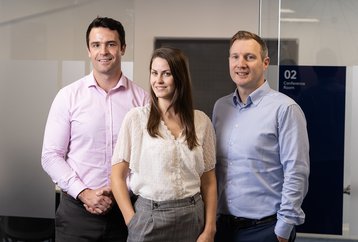Tate, a global leader in the engineering design and manufacture of internal data center energy efficiency enabling solutions, has demonstrated a real commitment to decarbonizing the built environment, unveiling its latest innovation, the new Tate Grid LEC structural ceiling.
LEC stands for Lower Embodied Carbon and denotes a version of a Tate product that has lower embodied carbon than the standard product. Specifically designed for high-performing data centers, New Tate Grid LEC has half the embodied carbon than standard Tate Grid.
The materials and construction phase of buildings is responsible for 11 percent of all global energy-related carbon emissions1. These emissions are known as embodied carbon. Reducing emissions in the built environment is critical to limiting warming to 1.5 ºC by 2050, as laid out by the Intergovernmental Panel on Climate Change (IPCC).
As part of Kingspan Group, Tate is committed to developing solutions that will reduce the carbon footprint of data centers, in keeping with the Group’s ten-year Planet Passionate sustainability strategy and science-based targets.
Two of the targets in Planet Passionate will directly impact this by 2030: Net Zero Carbon manufacturing by 2030 and a 50 percent reduction in carbon intensity in its primary supply chain2.
Tate’s new Tate Grid LEC, developed by its in-house team of engineering design experts, offers a minimum 55 percent reduction in embodied carbon across modules A-C and a minimum of 49 percent reduction in embodied carbon across modules A1-A3 when compared to the standard Tate Grid EPD verified to the EN15804+ A2:2019 standard.
Independently verified by Hedgehog Company, this advancement from Tate to reduce embodied carbon in data centers can be attributed to several key factors including Tate’s procurement of lower carbon aluminum that is produced using renewable energy, predominantly hydroelectric power, as opposed to fossil fuels used in traditional aluminum smelters.
Tate, as a sister company operating within the Kingspan Group, is part of a wider global decarbonization strategy which includes a commitment to Net Zero Carbon Manufacturing by 2030, a 50 percent reduction in carbon intensity in its primary supply chain by 2030, the introduction of an internal carbon charge of €70/ tCo2, and the investment in H2 Green Steel - a company pioneering the manufacture of steel using green hydrogen instead of fossil fuels.
“Existing buildings and construction are responsible for 39 percent of annual energy and process-related carbon dioxide (CO2) emissions globally3. At Tate, we aim to contribute to a net zero carbon built environment by minimizing our climate-related impacts across our value chain, with the launch of our new structural ceiling solution Tate Grid LEC specifically for our data center projects as part of a range of Kingspan Group’s lower embodied carbon solutions,” says Debra Smith Kingspan Data & Flooring’s, Divisional Sustainability Manager.
Gavin Blower, General Manager, Tate Europe adds: “We have been manufacturing for over 60 years and this is one of those truly important advances, which we think will be transformative both for our business and for our clients’ projects. As part of our broader sustainability commitments, we continuously enhance and upgrade our products. To deliver this, we employ a dedicated team of expert BIM (Building Information Modelling) engineers, advanced technical professionals, sustainability experts, and manufacturing specialists.”
Embodied carbon in materials is however only part of the solution to dramatically reducing carbon in buildings. This can only be achieved by operating efficient manufacturing sites, and investing in and developing products that offer carbon reductions during manufacturing and that offer options for recycling. Tate is focused on creating products that deliver carbon reductions for data centers on all these fronts.
For more information visit Tate's Grid LEC campaign portal here.
Media Enquiries:
Powerscourt
kingspan@powerscourt-group.com
Notes:
[1] World Green Building Council
[2] Reporting on Planet Passionate progress is against targets for both Kingspan Group’s underlying business (the business from a 2020 base year plus organic growth) and whole business (underlying business plus acquisitions).
[3] UNEP Emissions Gap Report 2022
The new product is part of a wider global decarbonization strategy as a sister company operating within the Kingspan Group which includes a commitment to Net Zero Carbon manufacturing by 2030, a 50 percent reduction in carbon intensity in its primary supply chain by 2030, the introduction of an internal carbon charge of €70/ tCo2 and the investment in H2 Green Steel - a company pioneering the manufacture of steel using green hydrogen instead of fossil fuels.


